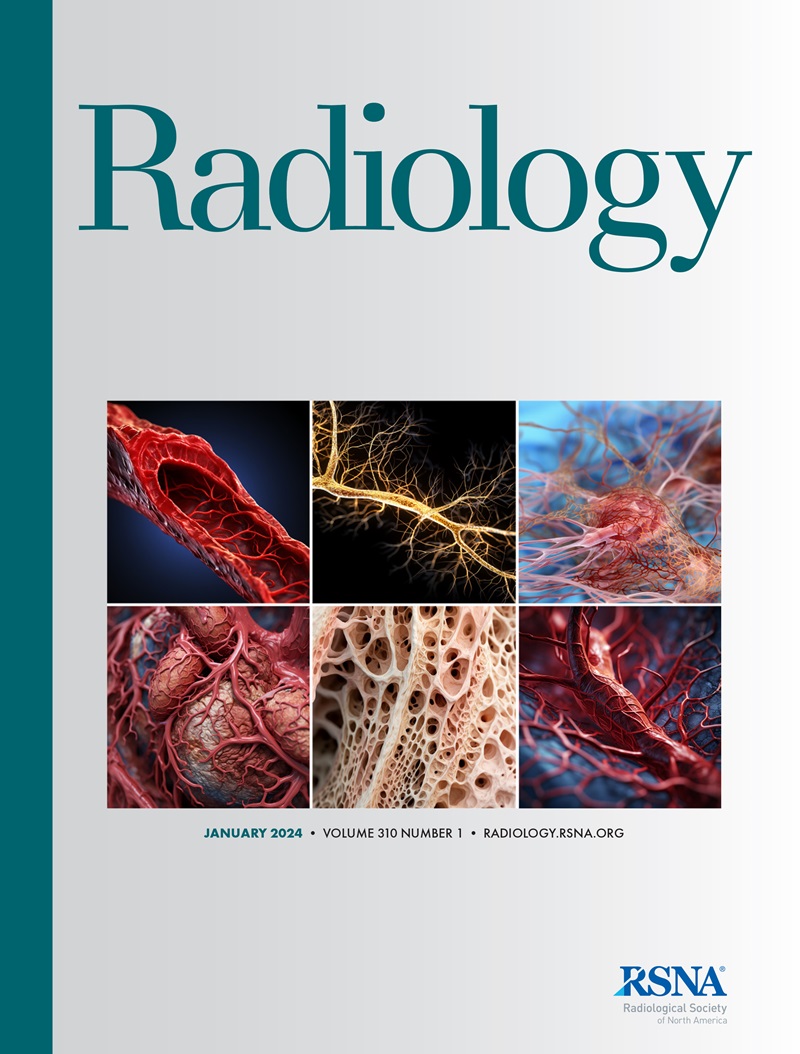How I Do It: Three-Dimensional MR Neurography and Zero Echo Time MRI for Rendering of Peripheral Nerve and Bone.
IF 12.1
1区 医学
Q1 RADIOLOGY, NUCLEAR MEDICINE & MEDICAL IMAGING
引用次数: 0
Abstract
MR neurography sequences provide excellent nerve-to-background soft tissue contrast, whereas a zero echo time (ZTE) MRI sequence provides cortical bone contrast. By demonstrating the spatial relationship between nerves and bones, a combination of rendered three-dimensional (3D) MR neurography and ZTE sequences provides a roadmap for clinical decision-making, particularly for surgical intervention. In this article, the authors describe the method for fused rendering of peripheral nerve and bone by combining nerve and bone structures from 3D MR neurography and 3D ZTE MRI, respectively. The described method includes scanning acquisition, postprocessing that entails deep learning-based reconstruction techniques, and rendering techniques. Representative case examples demonstrate the steps and clinical use of these techniques. Challenges in nerve and bone rendering are also discussed.我是怎么做的:三维磁共振神经成像和零回声时间MRI周围神经和骨的渲染。
MR神经造影序列提供出色的神经-背景软组织对比,而零回波时间(ZTE) MRI序列提供皮质骨对比。通过展示神经和骨骼之间的空间关系,渲染三维(3D) MR神经成像和中兴通讯序列的结合为临床决策提供了路线图,特别是手术干预。在本文中,作者分别描述了结合3D MR神经成像和3D ZTE MRI的神经和骨结构进行周围神经和骨融合渲染的方法。所描述的方法包括扫描采集、需要基于深度学习的重建技术的后处理和渲染技术。代表性的案例示例演示了这些技术的步骤和临床应用。还讨论了神经和骨的渲染所面临的挑战。
本文章由计算机程序翻译,如有差异,请以英文原文为准。
求助全文
约1分钟内获得全文
求助全文
来源期刊

Radiology
医学-核医学
CiteScore
35.20
自引率
3.00%
发文量
596
审稿时长
3.6 months
期刊介绍:
Published regularly since 1923 by the Radiological Society of North America (RSNA), Radiology has long been recognized as the authoritative reference for the most current, clinically relevant and highest quality research in the field of radiology. Each month the journal publishes approximately 240 pages of peer-reviewed original research, authoritative reviews, well-balanced commentary on significant articles, and expert opinion on new techniques and technologies.
Radiology publishes cutting edge and impactful imaging research articles in radiology and medical imaging in order to help improve human health.
 求助内容:
求助内容: 应助结果提醒方式:
应助结果提醒方式:


